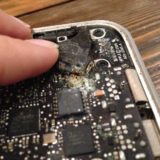Some Call It Pointless. He Calls It Art.
Bryan Cera’s is proud to build useless machines. Cera is the man behind ARAI the procrastinating robot, a scream-controlled game of pong, and a cell-phone that requires the sacrifice of your hand. Cera gave this inspiring TEDx talk on his work at the University of Wisconsin at Milwaukee earlier this month.
Share Brian’s Story:
Learning Through Useless Machines
Cera has passed on this affinity for useless machines to his students at Cardinal Stritch University, where he serves as a professor of visual arts. Students of his have built furniture for iPhones, 3D printed closets for origami clothing, and remote-controlled balls. His affinity stems from a desire to “explore relationships between humans and technology”.
For example, to understand the sacrifices we make in using smartphones, Cera designed a cell-phone that requires sacrificing a hand. According to Cera, it’s an extension on the idea of technology as phantom limbs. As I mentioned, he created a robotic arm whose sole purpose was to procrastinate. It paced back and forth, checked the refrigerator, looked at cats on the internet, and more. “I found it interesting that by making this robot more like a human, it instantly becomes useless and absurd” Cera said of the project.
Cera has also used his technological skills to breath new life into old technology. In one exhibition, he created a game of Super Mario which users can play by interacting with the game in 3D space. Cera re-enacted the 1972 classic PONG, but made it so that competitors must let out varying screams to control their paddle. He then installed the game into libraries, and watched as people violated social norms, and library rules to compete in the game.
Follow @msitver
In one of his coolest projects, Cera used a decades-old photograph of artist Marcel Duchamp’s hand-made chess set to recreate a lost piece of art in 3D. He then open-sourced the project so that creators around the globe could 3D print the chess set, and recreate Duchamp’s famous photo. As Cera put it, it’s taking something physical, making it digital, then making it physical once more, and then digital again.
In terms of physical functions Cera’s experiments may be useless, but in terms of what we learned from his projects, I’d say they have incredible utility.










